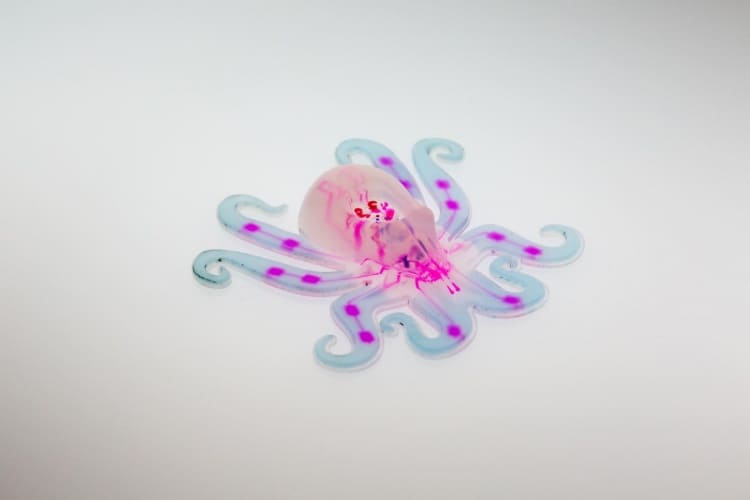
Nicknamed octobot, the device is powered by microfluidics. Its design was inspired by octopuses, whose movement, strength and elasticity have long been an inspiration for those working in soft robotics. But creating robots with absolutely no rigid parts is extremely challenging, and has never been achieved before, according to the researchers.
"One long-standing vision for the field of soft robotics has been to create robots that are entirely soft, but the struggle has always been in replacing rigid components like batteries and electronic controls with analogous soft systems and then putting it all together," said Robert Wood, Harvard’s Charles River Professor of Engineering and Applied Sciences.
"This research demonstrates that we can easily manufacture the key components of a simple, entirely soft robot, which lays the foundation for more complex designs."
Published in the journal Nature, the research details how the octobot’s movement is pneumatically driven by minute amounts of hydrogen peroxide. A chemical reaction converts a small amount of the liquid fuel into large amounts of gas, firing the soft limbs of the robot’s moulded body. The reaction is controlled by a 3D-printed microfluidic logic circuit - described as a “soft analogue of a simple electronic oscillator” - which controls when hydrogen peroxide decomposes to gas.
"Through our hybrid assembly approach, we were able to 3D print each of the functional components required within the soft robot body, including the fuel storage, power and actuation, in a rapid manner," said Jennifer A Lewis, the Hansjorg Wyss Professor of Biologically Inspired Engineering at Harvard.
"The octobot is a simple embodiment designed to demonstrate our integrated design and additive fabrication strategy for embedding autonomous functionality."
With the initial proof of concept completed, the next steps for the Harvard team will be to design an octobot that can crawl, swim and interact with its environment. The researchers are also hopeful that the relatively simple production techniques will inspire other roboticists and material scientists.
"The entire system is simple to fabricate, by combining three fabrication methods - soft lithography, moulding and 3D printing,” said Ryan Truby, a graduate student in Lewis’s lab, and a co-author of the paper. “We can quickly manufacture these devices."




Glasgow trial explores AR cues for autonomous road safety
They've ploughed into a few vulnerable road users in the past. Making that less likely will make it spectacularly easy to stop the traffic for...